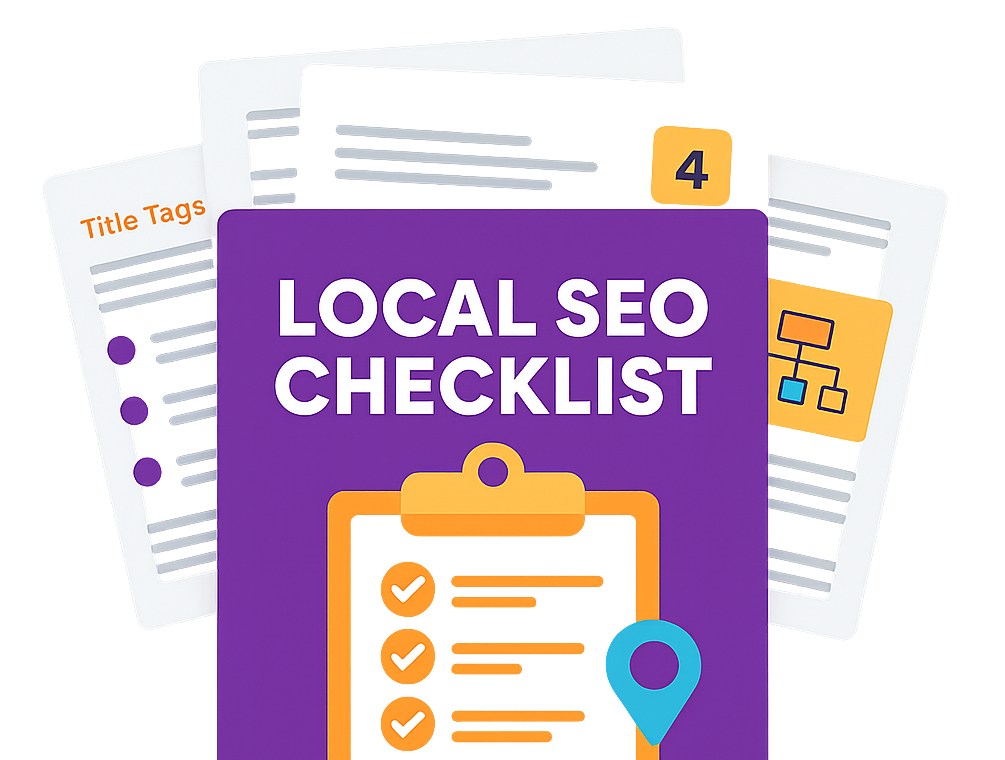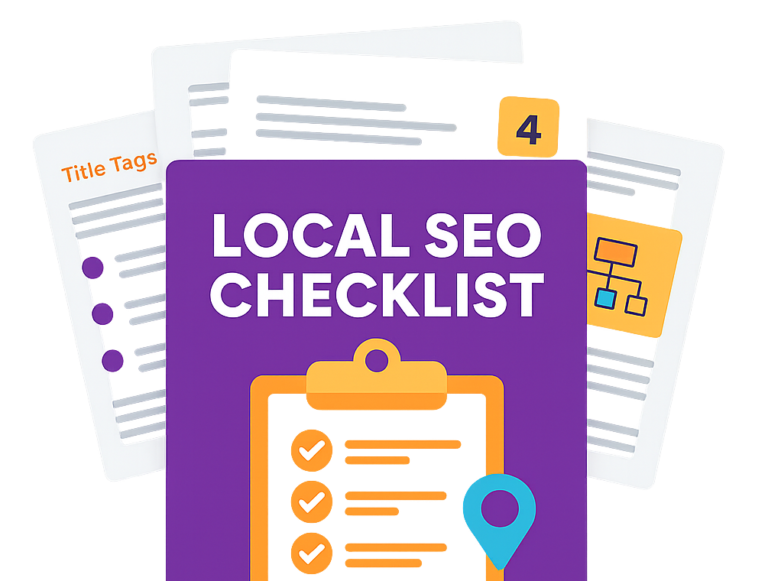Building a memorable brand doesn't happen by accident; it's the result of a deliberate, well-executed plan. A robust brand strategy is the core blueprint that guides every decision, from product development and pricing to your marketing communications. It defines who you are, what you stand for, and, most importantly, how you connect with your ideal customers in a crowded marketplace. For any business, from a local service provider in Cambridgeshire to a growing e-commerce startup, a clear strategy is the difference between being noticed and being forgotten.
Understanding the different approaches can unlock powerful growth opportunities for your own organisation. This article breaks down ten powerful examples of brand strategy, moving beyond surface-level descriptions to offer a deep analysis of the tactics used by leading companies. We will dissect what makes each approach effective and provide actionable insights that you can adapt and apply to your own business challenges. From premium positioning and niche market domination to purpose-driven missions, these real-world case studies offer a practical masterclass in building a lasting competitive advantage and driving tangible results.
1. Premium/Luxury Brand Strategy
A premium or luxury brand strategy positions a product or service at the highest end of the market, focusing on exclusivity, superior quality, and a high price point. This approach deliberately avoids mass-market appeal, instead cultivating an aura of prestige and desirability through scarcity and exceptional craftsmanship. Brands like Rolex and Hermès are masters of this, building an identity so aspirational that customers desire the status the product confers as much as the product itself.
Strategic Breakdown
This strategy centres on perception management. The goal is to make the brand synonymous with the pinnacle of quality, heritage, and social standing. It is one of the most powerful examples of brand strategy for creating high-profit margins and intense customer loyalty.
Key Insight: Luxury is not about fulfilling a need, but about fulfilling a desire. The strategy works by making the brand a symbol of achievement and refined taste, transforming customers into brand evangelists.
Actionable Takeaways for Your Business
- Enforce Scarcity: Control distribution channels and limit product availability. Louis Vuitton rarely discounts products, maintaining perceived value.
- Invest in Storytelling: Emphasise your brand’s heritage, craftsmanship, and the unique journey behind your products. Patek Philippe's "You never actually own a Patek Philippe. You merely look after it for the next generation" campaign is a masterclass in this.
- Deliver Exceptional Quality: Every touchpoint, from the product itself to the customer service and packaging, must reflect superior standards.
- Maintain Premium Pricing: Price is a key indicator of quality in this segment. Discounting can irrevocably damage a luxury brand's image.
2. Value/Economy Brand Strategy
A value or economy brand strategy focuses on offering products or services at the most competitive price point possible. This approach targets price-conscious consumers by prioritising affordability and operational efficiency, promising an acceptable level of quality for a significantly lower cost. Brands like IKEA and Walmart have built empires on this model, attracting a vast customer base by delivering consistent, reliable value for money. The core promise is simple: get what you need without overpaying.
Strategic Breakdown
This strategy is built on a foundation of operational excellence and supply chain mastery. The primary goal is to minimise costs across the board, from production to distribution, and pass those savings on to the customer. It stands as one of the most effective examples of brand strategy for capturing large market share through high-volume sales. Success hinges on making affordability a core part of the brand identity, building trust through price transparency and consistency.
Key Insight: Value isn’t just about being the cheapest; it’s about providing the best possible quality for the lowest possible price. The strategy succeeds by meeting essential customer needs reliably and affordably.
Actionable Takeaways for Your Business
- Optimise Your Supply Chain: Relentlessly pursue cost efficiencies in sourcing, manufacturing, and logistics. Amazon Basics achieves this by leveraging Amazon's immense distribution network.
- Focus on Volume over Margin: Your business model should be designed for high-volume sales with lower profit margins per item.
- Communicate Value Clearly: Marketing should be direct and price-focused. Walmart’s "Everyday Low Prices" slogan leaves no doubt about its core proposition.
- Standardise and Simplify: Offer a focused range of products that meet core needs, avoiding costly customisation or excessive features. This helps streamline operations and reduce costs.
3. Differentiation Brand Strategy
A differentiation brand strategy centres on making your brand stand out by offering unique features, superior innovation, or distinctive attributes that competitors cannot easily replicate. This approach carves out a competitive advantage by excelling in specific dimensions that customers value, allowing the brand to compete on superiority rather than on price alone. Brands like Apple, with its focus on design and user experience, and Dyson, with its revolutionary engineering, have built empires by being fundamentally different.
Strategic Breakdown
This strategy is about creating a "moat" around your business through innovation and unique value propositions. The goal is to become the only viable option for a specific customer need, making price a secondary consideration. It is one of the most effective examples of brand strategy for building a loyal customer base and defending market share against commoditisation. Successful execution requires a deep understanding of what your competitors offer, which you can learn more about by conducting a competitor analysis.
Key Insight: Differentiation is not just about being different; it is about being different in a way that your target audience genuinely cares about. The strategy succeeds when the brand's unique selling proposition directly solves a customer pain point better than anyone else.
Actionable Takeaways for Your Business
- Invest in R&D: Consistently allocate resources to research and development to foster innovation. Dyson famously created 5,127 prototypes before perfecting its first cyclonic vacuum.
- Communicate Your Uniqueness Clearly: Your marketing must relentlessly highlight what makes you different. Apple’s marketing has always focused on its intuitive user experience, not just technical specifications.
- Create Switching Costs: Develop an ecosystem that makes it difficult for customers to leave. Apple's seamless integration between its iPhone, Mac, and iCloud services is a prime example.
- Build Your Story Around Innovation: Use your brand’s commitment to innovation as the core of its narrative, positioning yourself as a forward-thinking leader in your industry.
4. Focus/Niche Brand Strategy
A focus or niche brand strategy involves concentrating all marketing efforts on a specific, well-defined segment of the market. Instead of attempting to serve everyone, this approach aims to dominate a particular customer group by tailoring offerings to their unique needs, becoming the go-to brand within that specialised space. Brands like Allbirds, targeting sustainable fashion enthusiasts, and Peloton, focusing on premium home fitness users, exemplify this by creating deep connections with a specific audience.
Strategic Breakdown
This strategy is built on the principle of "less is more". By deeply understanding and serving a narrow market, a brand can build unparalleled expertise and authority, creating a loyal community that feels seen and catered for. This is one of the most effective examples of brand strategy for startups and challengers aiming to gain a foothold against larger, more generalised competitors. It allows for highly efficient marketing spend and stronger product-market fit.
Key Insight: Winning a small, dedicated market is more valuable than being an insignificant player in a large one. The strategy centres on becoming an indispensable resource for a specific community, turning customers into advocates.
Actionable Takeaways for Your Business
- Define Your Niche Hyper-Specifically: Go beyond simple demographics. Understand the psychographics, pain points, and values of your target audience. DuckDuckGo successfully targeted users deeply concerned with online privacy.
- Become an Authority: Create highly targeted content, build strong community engagement, and position your brand as the expert in its niche.
- Develop Tailored Products: Design your offerings to solve the specific problems of your niche audience. Warby Parker addressed the need for stylish, affordable eyewear, a clear pain point for a specific consumer group.
- Communicate Authentically: Your messaging must resonate deeply with the niche's unique language and culture. Glossier’s "skin first, makeup second" ethos spoke directly to millennial beauty consumers.
5. Lifestyle/Aspirational Brand Strategy
A lifestyle or aspirational brand strategy sells an identity rather than just a product. It connects with consumers on an emotional level by embodying a set of values, ideals, or a way of living that customers aspire to. Brands like Patagonia and Harley-Davidson don’t just sell outdoor gear or motorcycles; they sell environmental activism and a culture of rebellious freedom, respectively. This approach turns customers into members of a tribe, forging a powerful bond that transcends transactional relationships.
Strategic Breakdown
This strategy is centred on building a community and an emotional connection. The aim is to integrate the brand so deeply into a customer's self-identity that purchasing its products becomes an act of self-expression. This is one of the most effective examples of brand strategy for creating lasting loyalty and turning customers into vocal advocates.
Key Insight: People don't buy what you do; they buy why you do it. The strategy succeeds by aligning the brand’s core values with the personal values of its target audience, making the brand a symbol of who they are or who they want to become.
Actionable Takeaways for Your Business
- Define Your Core Values: Clearly articulate what your brand stands for beyond its products. Patagonia’s commitment to environmentalism is woven into every aspect of its business.
- Build an Authentic Community: Create spaces, both online and offline, where customers can connect over shared interests related to your brand’s lifestyle. Red Bull achieves this through its sponsorship of extreme sports events.
- Use Immersive Storytelling: Share stories that showcase your values in action. This is a crucial part of a well-organised plan. You can discover more about building a framework for this with our guide on how to create a content strategy.
- Maintain Consistency: Ensure every customer touchpoint, from marketing campaigns to product design, consistently reflects the lifestyle you are promoting.
6. Co-branding/Partnership Brand Strategy
A co-branding or partnership strategy involves two or more brands collaborating on a joint product, service, or marketing initiative. This approach leverages the combined equity, customer bases, and market credibility of each partner to create a synergistic effect that would be difficult to achieve alone. Successful examples like the GoPro and Red Bull collaboration or Spotify's integration into Uber showcase how brands can create mutual value and reach new audiences by uniting their strengths.
Strategic Breakdown
This strategy is built on the principle of mutual benefit and audience crossover. The primary goal is to borrow credibility and extend reach by associating with another reputable brand whose audience complements your own. This is one of the most effective examples of brand strategy for accelerating market penetration, enhancing brand perception, and driving innovation by combining different areas of expertise.
Key Insight: Effective co-branding isn't just about sharing logos; it's about creating a new, combined value proposition that is more compelling to both audiences than what each brand could offer independently.
Actionable Takeaways for Your Business
- Ensure Strategic Alignment: Choose partners whose brand values and audience demographics are complementary, not conflicting. The Apple Watch Nike edition is a perfect alignment of tech and fitness.
- Define Roles and Ownership Clearly: Establish upfront who is responsible for what, how intellectual property will be handled, and how revenues will be shared to prevent future disputes.
- Create a Unified Marketing Narrative: Develop a joint story that explains why the partnership makes sense for the customer. This narrative should be authentic and compelling.
- Establish Clear Success Metrics: Define your objectives from the start, whether it's lead generation, sales, or increased brand awareness, and track performance against these goals.
7. Sustainability/Purpose-Driven Brand Strategy
A sustainability or purpose-driven brand strategy embeds social responsibility and environmental ethics into the core of a company's identity. Instead of treating these as afterthoughts, brands like Patagonia and Ben & Jerry's build their entire value proposition around a commitment to a greater good. This approach attracts and retains consumers who prioritise values and are willing to align their purchasing power with companies making a positive impact.
Strategic Breakdown
This strategy centres on authenticity and measurable impact. The goal is to prove that the brand's purpose is more than just a marketing slogan; it's a fundamental part of its operations, from sourcing to production. It stands as one of the most resonant examples of brand strategy for building a deep, values-based connection with modern consumers and can significantly enhance a company's public image. Maintaining this positive perception is a key part of online reputation management.
Key Insight: Purpose isn't just about what a brand sells, but what it stands for. This strategy transforms a company from a simple vendor into a partner in the consumer's own ethical journey.
Actionable Takeaways for Your Business
- Embed Purpose Authentically: Your mission must be genuine and reflected across all business operations, not just marketing. Seventh Generation’s commitment to plant-based products is an example of this integration.
- Be Transparent with Impact: Use clear metrics and third-party certifications (e.g., Fairtrade, B Corp) to validate your claims and build trust.
- Tell Compelling Stories: Share the real-world impact of your initiatives. TOMS’ one-for-one donation model was built on a simple, powerful story that was easy for customers to understand and support.
- Engage Your Community: Involve your customers and stakeholders in your mission. Invite them to participate in initiatives, provide feedback, and act as advocates for your cause.
8. Multi-brand/Portfolio Brand Strategy
A multi-brand, or portfolio, strategy involves a parent company managing multiple distinct brands, often within the same product category, to appeal to different market segments. This approach allows a single corporation to capture a wider market share by offering varied products at different price points and with unique identities. Companies like Procter & Gamble (P&G) master this by owning Tide for powerful cleaning, Ariel for innovation, and Fairy for gentleness, each dominating its specific niche while leveraging P&G’s vast resources.
Strategic Breakdown
This strategy is centred on market saturation and risk diversification. By creating a portfolio of brands, a company can cater to diverse consumer needs, preferences, and price sensitivities, effectively boxing out competitors. It is one of the most effective examples of brand strategy for large corporations aiming to maximise their presence across the entire consumer landscape and insulate the parent company from the potential failure of a single brand.
Key Insight: A portfolio strategy allows a company to compete with itself, preventing market gaps that rivals could exploit. Each brand is a targeted weapon, designed to win a specific consumer battle.
Actionable Takeaways for Your Business
- Define Distinct Segments: Clearly map out the target audience, positioning, and value proposition for each brand to avoid cannibalisation. Volkswagen Group positions Audi as premium, Porsche as sports luxury, and Skoda as value-focused.
- Establish a Clear Brand Architecture: Decide if brands will be endorsed by the parent company (e.g., Courtyard by Marriott) or stand alone (e.g., P&G’s portfolio) to manage consumer perceptions.
- Leverage Shared Resources: Centralise functions like supply chain, R&D, and administrative support to create operational efficiencies across the portfolio without diluting individual brand identities.
- Prevent Brand Dilution: Ensure each brand maintains its unique promise and personality. Overlapping too much can confuse consumers and weaken the entire portfolio’s effectiveness.
9. Direct-to-Consumer (DTC) Brand Strategy
A Direct-to-Consumer (DTC) brand strategy involves selling products directly to customers through owned channels, bypassing traditional intermediaries like wholesalers and retailers. This model empowers brands to control the entire customer journey, from marketing to sales and service, fostering a direct relationship. Brands like Warby Parker and Dollar Shave Club pioneered this approach, disrupting established industries by offering better value, convenience, and a superior customer experience.
Strategic Breakdown
This strategy centres on owning the customer relationship and leveraging first-party data. By cutting out the middleman, brands can capture higher profit margins, gain invaluable insights into consumer behaviour, and maintain complete control over their brand messaging. It is one of the most effective examples of brand strategy for modern businesses aiming to build a loyal community and rapidly adapt to market changes. To master this, you must optimise your digital storefront to increase e-commerce sales.
Key Insight: DTC is not just a sales channel; it's a customer-centric business model. Success depends on building a powerful brand narrative and an exceptional end-to-end experience that traditional retail cannot match.
Actionable Takeaways for Your Business
- Own Your Channels: Invest in a robust e-commerce platform and build a strong presence on social media. Your website is your flagship store.
- Leverage First-Party Data: Use customer data collected from your channels to personalise marketing, product recommendations, and communication.
- Focus on Customer Experience: From unboxing to customer support, every touchpoint must be seamless and reinforce your brand values. Glossier built its empire on this.
- Build a Community: Use content, social media, and loyalty programmes to create a tribe of dedicated followers who feel connected to your brand’s mission.
10. Heritage/Legacy Brand Strategy
A heritage or legacy brand strategy leverages a company’s long history, tradition, and proven longevity as its core differentiator. This approach builds deep-rooted trust and consumer preference by showcasing authenticity and cultural significance. Brands like Levi's and Jack Daniel's use their rich past to create an emotional connection, positioning themselves as enduring and reliable choices in a market filled with fleeting trends. Their history isn't just a talking point; it's the foundation of their identity.
Strategic Breakdown
This strategy centres on storytelling and consistency. The goal is to prove that the brand has stood the test of time, translating its historical endurance into a promise of future quality and reliability. It is one of the most effective examples of brand strategy for cultivating loyalty, as it suggests a brand is more than a mere product; it's a part of our collective cultural fabric.
Key Insight: Heritage isn't about being old; it's about being timeless. The strategy works by linking the brand’s past accomplishments and values to the contemporary needs of the consumer, making its history relevant today.
Actionable Takeaways for Your Business
- Tell Authentic Stories: Communicate your founding stories and values with verifiable proof points. Archive and celebrate your brand’s history through campaigns and content.
- Balance Tradition with Modernisation: Introduce innovations that align with your core identity without alienating your loyal customer base. Mercedes-Benz excels at integrating cutting-edge technology while honouring its engineering legacy.
- Uphold Legacy Quality: The quality standards that built your reputation must be rigorously maintained. Any decline in quality will quickly undermine decades of trust.
- Leverage Brand Archives: Use historical designs, packaging, and advertising as inspiration for new products or limited-edition releases to connect with nostalgic sentiments.
10-Point Brand Strategy Comparison
| Strategy | Implementation complexity | Resource requirements | Expected outcomes | Ideal use cases | Key advantages |
|---|---|---|---|---|---|
| Premium / Luxury Brand Strategy | High — manage scarcity, craftsmanship, and experience | Very high — premium materials, elite retail, exceptional service | High margins, strong prestige, limited volume growth | Luxury goods, high-end services, affluent segments | Pricing power, strong loyalty, elevated brand equity |
| Value / Economy Brand Strategy | Moderate — scale operations and cost control | Moderate–high — efficient supply chain, high-volume logistics | High volume sales, wide penetration, low per-unit margin | Everyday goods, mass retail, price-sensitive customers | Broad reach, resilience in downturns, competitive pricing |
| Differentiation Brand Strategy | High — continuous innovation and messaging | High — R&D, design, IP protection, targeted marketing | Premium pricing, clear market differentiation, loyal customers | Tech products, speciality consumer goods, innovation-led firms | Competitive moat, reduced price competition, unique value |
| Focus / Niche Brand Strategy | Moderate — deep customer understanding and targeting | Low–moderate — specialised product development, targeted marketing | High retention, strong authority within niche, limited scale | Vertical startups, specialist services, niche consumer segments | Lower direct competition, expert positioning, high loyalty |
| Lifestyle / Aspirational Brand Strategy | High — sustained emotional storytelling and experience design | High — marketing, influencer partnerships, community building | Strong emotional loyalty, high LTV, premium positioning | Apparel, beverages, fitness, lifestyle experiences | Brand advocacy, identity-driven engagement, premium pricing |
| Co-branding / Partnership Brand Strategy | High — alignment, joint management, legal coordination | Shared — combined marketing and development resources | Access to new audiences, shared costs, faster entry | Complementary brands, campaigns, product collaborations | Expanded reach, credibility by association, resource leverage |
| Sustainability / Purpose-Driven Brand Strategy | Moderate–high — embed purpose across operations | High — sustainable sourcing, compliance, transparent reporting | Purpose-driven loyalty, positive PR, potential premium acceptance | Consumer goods, apparel, food & beverage targeting conscious buyers | Differentiation by values, employee engagement, long-term resilience |
| Multi-brand / Portfolio Brand Strategy | Very high — coordinate multiple identities and strategies | Very high — separate P&Ls, marketing, product teams | Broad market coverage, diversified revenue, operational complexity | Large corporations, FMCG, automotive groups | Market segmentation, risk distribution, capture across segments |
| Direct-to-Consumer (DTC) Brand Strategy | High — build owned channels, fulfilment, CRM | High — e-commerce tech, logistics, marketing spend | Higher margins, direct data, controlled brand experience | Startups and consumer brands seeking direct relationships | First-party data, margin control, faster customer feedback |
| Heritage / Legacy Brand Strategy | Moderate — preserve history while modernising carefully | Moderate — maintain craftsmanship, archive, heritage marketing | Trust, intergenerational loyalty, premium positioning | Long-established brands, luxury crafts, traditional products | Authentic credibility, resilient brand equity, emotional connection |
Crafting Your Own Winning Brand Strategy
Throughout this detailed exploration of brand strategy examples, a clear and powerful theme emerges: success is never accidental. From the precision of a luxury brand like Rolex to the community-centric approach of a DTC innovator like Gymshark, each triumphant story is built upon a foundation of deliberate, consistent, and authentic strategic choices. These organisations didn't just sell products; they meticulously crafted an identity, a promise, and an experience that resonated deeply with a specific audience.
We've seen how a differentiation strategy allowed a company like Dyson to command a premium by focusing on superior engineering, while a value strategy enabled IKEA to dominate its market through efficiency and accessibility. The key lesson is that there is no single "best" strategy, only the one that is most authentic to your brand's core purpose, your operational capabilities, and the unique needs of your customers. Your strategy is the compass that guides every decision, from product development and marketing communications to customer service and internal culture.
From Inspiration to Implementation
The journey from analysing these examples of brand strategy to building your own can feel daunting, but it begins with answering fundamental questions. Who are you truly serving? What unique value do you offer that no one else can? How can you communicate that value consistently across every single touchpoint?
The most actionable takeaways from the brands we've examined can be distilled into three core principles:
- Clarity of Purpose: Every successful brand, whether pursuing a niche, a luxury position, or a purpose-driven mission, has an unwavering understanding of why it exists. This clarity prevents brand dilution and ensures every action reinforces its core identity.
- Audience Obsession: The most powerful brands don’t just know their audience’s demographics; they understand their psychographics, aspirations, and pain points. This deep empathy allows them to create products and messages that feel personal and indispensable.
- Unwavering Consistency: From the visual identity and tone of voice to the customer experience, consistency builds trust and recognition. It’s the disciplined, day-in-day-out execution of the brand promise that transforms a business into an iconic brand.
Ultimately, building a winning brand strategy is an exercise in focused execution. It requires the courage to say "no" to opportunities that don't align with your core mission and the discipline to invest in the activities that do. By learning from these diverse and powerful examples, you can begin to architect a brand that not only captures attention but also earns lasting loyalty and drives sustainable growth.
A powerful brand strategy deserves to be seen by the right audience. At Bare Digital, we specialise in creating bespoke search engine optimisation plans that connect your unique brand story with customers actively searching for your solutions in Cambridgeshire and across the UK. Start your journey to greater visibility with our free, no-obligation SEO Health Check and let us help you build the digital presence your brand deserves.








